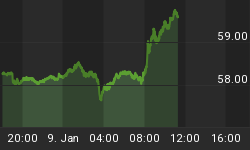Even to the casual observer it's now apparent that the financial world is one giant see-saw. On the one side of swing is the once Almighty Dollar and on the other side is every other investable asset class.
Wherever the Dollar goes in 08, stocks, bonds and commodities will head the other way.
Call it the liquidity trade, call it the end of the Dollar, call it what you like but the long held truth of inter-market analysis has been superseded by one factor and one factor alone - what's the Dollar doing?
Since 2003 we've seen all asset classes rise in tandem whilst the Dollar fell. Once upon a time we were accustomed to simpler logic such as rising commodity prices were inflationary and caused higher interest rates and a lower stock market Or Gold is a counter-cyclical investment that does well when other asset classes such as stocks are falling. That kind of logic no longer seems to hold.
It seems the Dollar has so much value stored up inside it that when it falls its like the sun throwing off a mass of energy in its wake.
But the Dollar like all other markets doesn't fall continuously (even if it should fundamentally) and when it rises, however small, it sucks back a portion of the value it has given off, causing stock markets, commodities and even non-sovereign debt to plummet in value.
Thus we would say to the causal market observer, if you want to know how to make money in this environment, all you need to know is essentially whether the Dollar is rising or falling. And if it's falling, buy the asset class you're most familiar with be it real estate, stocks, debt, art, antiques etc.
So where is the Dollar headed?

Chart 1- US Dollar (top) vs. Real 3-month interest rates offset 1 year (bottom)
Most Economic 101 classes teach that the exchange rate between 2 countries is calculated as the interest rate differential between them. For example if country A yields a real rate of return of 4% p.a. and country B 3% p.a. then over time money will move from the low yielding country B to the higher yielding country A and the exchange rate improve in favour of country A.
We attempted to do the same thing by calculating the 'real' rate of 3-month treasury bills by comparing them to the price of Gold (bottom). We then noticed an interesting correlation. By offsetting the real rate on 3-month bills against the US Dollar by 1 year we could predict the trend in the Dollar for the following year.
Correlations are never perfect and tend to fail just when you need them most, but this record is impressive. For example, the real rate of interest turned higher in 1994 and the US Dollar made a sustained move higher in 1995 (red rectangle). Or how about the MAJOR turn in the Dollar in 2002? That was predicted a year in advance by the turn in real short term rates.
The current situation is fascinating because the real rate of interest plummeted this year (3rd red rectangle) as short interest rates plummeted and Gold challenged generational highs. If the correlation continues then the Dollar is in for more downside in 2008.
Our expectation is that the current rally in the Dollar will finish at its green downward trending line and its 50 day moving average - both at around 80. Thereafter we foresee the Dollar falling to all-time lows and correspondingly a strong stock, commodity and even bond market in '08.
More commentary and stock picks follow for subscribers...
















